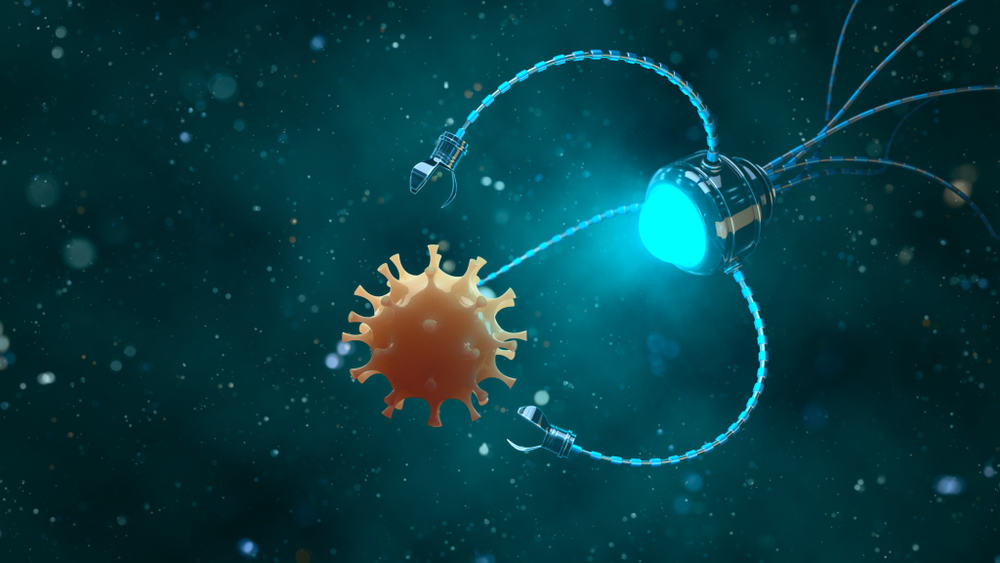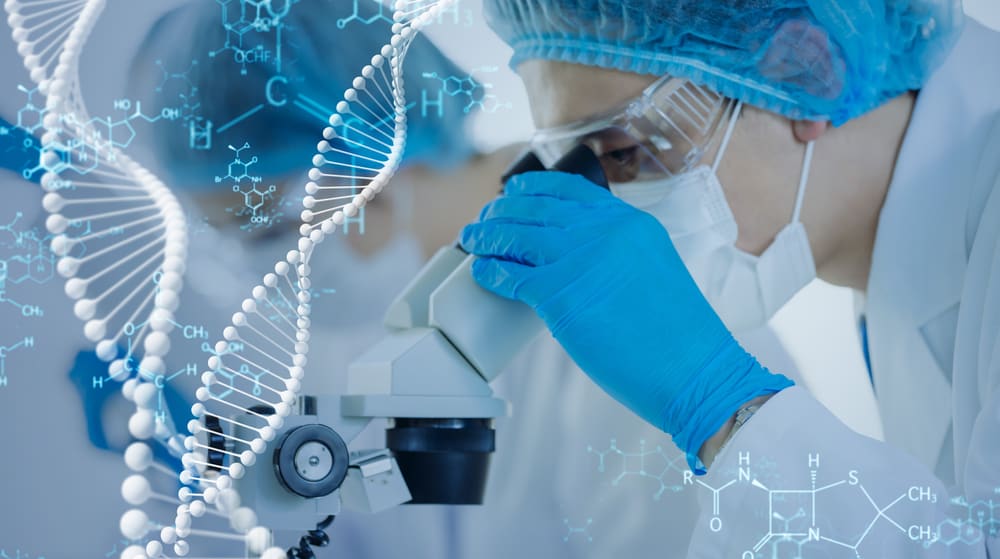
Jan 17, 2021
You may recall from your high school biology class that cells are referred to as the “building blocks of life”. When your body becomes injured or worn out, these building blocks break down leading to pain and loss of function. Yet, cellular therapy is the carpenter that repairs and replaces these broken cells and tissues.
Cell based therapy harnesses the powerful healing capabilities of cells in your body to repair damaged tissues and restore health. These are innovative therapies are based on concepts and scientific evidence that has emerged over the recent decades.
The world-renowned Center for Regenerative Medicine at the Mayo Clinic works closely with the Human Cellular Therapy Laboratories at campuses in Minnesota, Florida and Arizona to develop cellular therapies for more than a dozen medical conditions. These include ALS (Lou Gehrig’s disease), cancer, diabetes and orthopedic conditions such as osteoarthritis and degenerative disk disease [i]. San Diego Orthobiologics Medical Group is the premier regenerative medical center in San Diego providing therapies for orthopedic conditions. Drs. Christopher Rogers and Mary A. Ambach are recognized leaders in this field for their expertise in this exciting new medical specialty. Together, they have developed an extensive record of using Cell Based therapies to treat thousands of patients suffering from conditions such as painful arthritis or debilitating lower back pain. Many of these patients thought they had exhausted all of their treatment options and were concerned about resigning to a life of pain.
Cell Based therapies has given them a new lease on life.
All of the treatments offered at the San Diego Orthobiologics Medical Group are FDA-compliant and based on sound scientific evidence. We only use cells that are derived from the patient’s own body and processed in our state of the art laboratory using FDA-approved devices and methods. We do not use any donor stem cell products because these have not been tested for safety or efficacy.
These regenerative treatments contain restorative cells that are derived from a patient’s own blood, fat or bone marrow tissues. They help jump start the body’s own natural healing processes by encouraging the growth of healthy new cells and tissues to replace those that are injured or degenerated.
Dr. Christopher Rogers currently serves on the board of directors for the American College of Regenerative Medicine and has published and lectured extensively at national medical conferences on spine care, sports medicine, regenerative medicine and musculoskeletal ultrasound. He regularly teaches courses on regenerative cellular therapy throughout the country, including at the Regenerative Medicine Training Institute, the Interventional Orthopedics Foundation and the Orthobiologic Institute.
Dr. Mary A. Ambach is a clinical instructor at the University of California San Diego School of Medicine and also serves as a clinical instructor of medicine at the David Geffen School of Medicine at UCLA, clinical assistant professor of Physical Medicine & Rehabilitation at the Western University of Health Sciences and an associate professor at the Southern California University Sports Medicine Program. She has authored several published articles and book chapters in Regenerative Medicine and is actively involved in clinical research studying the effects of bone marrow-derived cells and platelet rich plasma for the treatment of low back pain due to degenerative disc disease.
Platelet rich plasma and other cell based therapies represent some of the most exciting advances seen in medicine in recent years. They offer patients options not previously available for conditions that were not previously treatable without surgery. Patients should do their homework and get the facts about how these treatments may help them to alleviate pain and restore a healthy, active life.
[i] https://www.mayo.edu/research/centers-programs/center-regenerative-medicine/shared-services/human-cellular-therapy-laboratory

Dec 16, 2020
In the last few years, there have been great advances in the field of Regenerative Medicine and Stem Cell Therapy. These treatments hold a great deal of promise for the treatment of a variety of orthopedic conditions. Most treatments are offered at your convenience in a medical clinic setting without the need for surgery.
What is Regenerative Medicine?
Regenerative medicine is a multi-disciplinary field that aims to restore damaged or diseased tissues by utilizing the body’s own natural healing process. By bringing together many different disciplines such as cellular biology, genetics, and tissue engineering, Regenerative Medicine has revolutionized the way physicians can treat orthopedic conditions. Stimulating our body’s natural ability to heal and promote tissue regeneration has replaced many traditional treatment options such as steroid injections or surgery.
Stem Cell Therapy
According to the International Society for Stem Cell Research’s (ISSCR) president, Douglas Melton, “Stem cell science is rapidly transforming how we think about the future of medicine. The field is actively working to address how we facilitate getting potential therapies from the lab to the clinic.”
Stem cells have the ability to develop into many different types of cells in the body, which is why stem cell therapy is important in the field of regenerative medicine. There is constant advancement of research in the use of stem cell for replacement of damaged tissue or transplants, drug testing and development and regenerative medicine.
How are Stem Cell Therapy and Regenerative Medicine Related?
There is a direct connection to stem cell therapy and the practice of Regenerative Medicine which harnesses the body’s ability to heal itself and regrow tissues. The different types of stem cells, namely embryonic, adult, and induced pluripotent stem cells, are used in the field of developmental biology to study how cells behave. Stem cells are also used to test new to drugs for the treatment of various diseases and medical conditions. In the field of orthopedics, adult stem cells play a crucial role in the cell-based therapies used to treat orthopedic injuries such as knee osteoarthritis.
What Orthopedic Conditions Can Be Treated with Cell-Based Therapies?
- Knee pain due to osteoarthritis or meniscus tears
- Shoulder pain due to rotator cuff tendon tears or tendinitis
- Carpal Tunnel Syndrome
- Golfer’s Elbow and Tennis Elbow
- Sciatica
- Chronic ankle ligament sprains
- Low back pain due to disc degeneration or sacroiliac joint ligament injury
Regenerative medicine has entered the world of clinical practice thanks to quickly evolving technology and advancements in the understanding of how stem cells work in the body. As research continues, the field of Regenerative Medicine and stem cell therapy will continue to grow, providing doctors and their patients the ability to treat many conditions that were previously untreatable.
REFERENCES:
NCBI: Regenerative Medicine
UNMC: Stem Cells and Regenerative Medicine
International Society of Stem Cell Research: Stem Cell Therapies and Regenerative Medicine
California Stem Cell Agency: The Power of Stem Cells
American Association of Blood Banks: Regenerative Medicine

Oct 30, 2020
Whether as a result of injury or age related wear-and-tear, pain in the neck can be more than just a saying: it can be debilitating.
According to the Mayo Clinic, neck pain is the fourth leading cause of disability in the United States. Most episodes of acute neck pain will resolve without treatment, but almost half of the people with neck pain will suffer from recurrent episodes.[i] The good news for these patients is that science and technology are working together to help physicians identify the source of neck pain and offer new options for long-lasting relief.
Identifying the Source of Neck Pain
Advancements in imaging have allowed physicians to get a better look at the intricate details of the spine. This enables them to see the different structures in the cervical spine (neck) more clearly and can help them identify the source of chronic, unresolved neck pain.
Common sources of chronic neck pain include the following:
- Arthritis: Osteoarthritis of the spine can lead to degeneration that is associated with the normal wear and tear of joints, discs and bones in the spine as people age. The arthritis can lead to bone spurs that can make movement of the neck painful and create narrowing of the space around the spinal nerves and spinal cord; a condition called spinal stenosis.
- Cervical Facet Joint Dysfunction: The facet joints are the small joints that connect the individual bones in the neck called the vertebrae. These joints allow for movement of the neck and provide stability of the spine. When these joints become inflamed, injured, or get out of alignment, neck pain, stiffness and reduced mobility may result.
- Herniated Discs: The discs are gel filled structures that act as cushion or shock absorbers between the vertebral bones in your spine. They consist of a strong outer layer that protects the disc’s gel-like interior. If the outer layer weakens or tears, the disc may protrude into the spinal canal and affect nearby nerves, causing neck pain, arm pain or muscle spasm.
There are many other causes of neck pain including nerve and spinal cord problems, fracture and non-spine sources like tumor. It is important that your physician perform a comprehensive evaluation of your medical history and physical examination to give you an appropriate diagnosis for your neck pain.
Cellular Treatments that Help Resolve Neck Pain Naturally
Most cases of neck pain can be resolved with physical therapy, activity modification and over-the-counter anti-inflammatory medications. Lifestyle improvements such as maintaining proper posture and avoiding prolonged neck bending from the use of mobile devices (ie., “text neck”) are also helpful.
When neck pain persists, spine specialists can offer a number of options for long-lasting pain relief. Orthobiologics are cells and substances derived from cells that are naturally found in the body and have the ability to heal injured tissues. These cellular products are providing new options for treating stubborn neck pain.
· Platelet Rich Plasma puts the healing properties of the patient’s own blood to work in repairing damaged joints and helping with nerve pain. The platelets in the blood release growth factors and proteins that promote tissue repair, while the plasma carries the hormones, electrolytes and nutrients required to nourish cells during the healing process. PRP treatments should be customized to the particular individual and their injury in order to be effective.
· Cell based therapies use a patient’s own bone marrow or adipose (fat) tissue derived cells. These cells are comprised of adult stem cells and many other healing cells. They produce molecules that direct other cells in the area to form new blood vessels, decrease inflammation, awaken other stem cells and encourage formation of new healthy tissues. Stem cells are special cells that have the unique ability to develop into the specific kind of cell needed, whether that be a tendon, ligament, cartilage or bone cell. Skilled regenerative medicine practitioners use highly specialized processes to prepare these cells that are then delivered directly to the injured area to stimulate healing.
· Prolotherapy (Proliferative Therapy) uses dextrose and other natural substances that are injected into a chronically injured ligament, nerves or joint in order to help the body jump start its own natural healing response.
Applying Proven Treatments to Neck Pain
Regenerative medicine specialists have been using orthobiologics in the past decade with great success to treat other orthopedic conditions, including knee arthritis, back pain, tennis elbow, tendon tears and more.
A select few qualified physicians are now applying their experience to put these powerful sources of healing to work to address neck pain. To ensure maximum safety and efficacy, patients considering orthobiologic treatments for chronic neck pain should take note of the following important points:
- Cells are derived from your own body: Regenerative products that come from your own body (autologous) have been proven to be safe and effective in peer-reviewed research. The U.S. Food and Drug Administration (FDA) currently does not allow the use of donor stem cell products derived from amniotic fluid or other fetal tissues to treat orthopedic conditions since they have not been proven in safety and efficacy. These products also pose a risk of disease transmission or immune reaction. Moreover, these donor tissues do not to contain living stem cells, as opposed to what is claimed by the companies that market these products.
- Customized treatment: The best outcomes occur when your own cells and platelet rich plasma are prepared using the most advanced protocols to create a treatment that is customized to your specific injury.
- Targeted delivery: To maximize effectiveness, these regenerative treatments should be delivered under image guidance with fluoroscopy (x-ray) or ultrasound to ensure precise delivery to the injured area. Only physicians with fellowship training in advanced image guided procedures are certified to perform these procedures.
- Expert physicians: If you are considering regenerative medicine for the treatment of your spine condition, seek a board-certified physician who specializes in treating orthopedic injuries and has advanced training in regenerative medicine. These physicians are best suited to obtain the best results employing the latest research, technology and safety protocols.
Since orthobiologic treatments for neck pain are relatively new within the field of regenerative medicine, patients need to ask the right questions and research the appropriate physicians to deliver the best care.
Drs. Christopher J. Rogers and Mary A. Ambach of San Diego Orthobiologics Medical Group together have successfully treated thousands of patients with cell-based therapies for more than three decades. They are published authors and stem cell researchers who were chosen to participate in a first of its kind, FDA-approved clinical trial to treat knee osteoarthritis. The SDOMG facility in Carlsbad contains the most advanced Regenerative Medicine technology in San Diego and offers same day treatments with the highest level of safety, efficacy and patient satisfaction.
[i] https://www.mayoclinicproceedings.org/article/S0025-6196(14)00833-7/abstract
[ii] https://www.stemcures.com/stem-cell-therapy-for-neck-pain-cincinnati

Sep 18, 2020
The field of Regenerative Medicine is based on the principle that the human body can heal itself. Scientific discoveries in cellular biology, genetics and tissue engineering have been translated into treatments for previously untreatable conditions. The American Association of Blood Banks (AABB), an international association representing individuals and institutions involved in cellular treatments, describes regenerative medicine as “the process of replacing or regenerating human cells, tissues or organs to restore or establish normal function.”.
In the United States, Regenerative Medicine is a rapidly emerging field. Yet the foundations of this practice date back to ancient civilizations where human anatomy was studied and documented. Their findings were essential to the work of 18th and 19th century scientists who made huge breakthroughs in cellular biology. Cellular research completed in the 1700s and 1800s has lent a great deal to our understanding of how cells divide and proliferate. This knowledge continues to guide the advancements in the 21st century.[i]
Using cells to heal:
Since the first bone marrow cell transplant for the treatment of leukemia in 1968[ii], scientists and researchers have explored new ways to use Regenerative Medicine for the treatment of other medical conditions such as arthritis, disc degeneration and tendon injuries.
These regenerative treatments involve the use of a patient’s own cells to heal their injuries. Orthopedic medicine physicians treat injuries of the joint, ligament, tendon and bone. Platelet rich plasma (PRP) is the most commonly used orthopedic regenerative medicine treatment. PRP is produced by concentrating the platelets in a sample of a patient’s own blood. Platelets contain hundreds of growth factors that decrease inflammation and stimulate healing.
Another regenerative therapy is by using Cells that are derived from a patient’s own bone marrow and fat tissue. These Adult stem cells called Mesenchymal stem cells (MSCs) are found in these tissues and have the ability to develop into bone, tendon or cartilage cells and are important to support growth and development. In the body, they have been shown to stimulate cell growth, prevent cell death and inhibit pain or inflammation.
Prolotherapy is a form of regenerative therapy that does not involve the use of your own cells, but instead uses sugar water (dextrose) to stimulate a healing response in ligaments, tendons and joints.
These treatments do much more than simply relieve pain caused by conditions such as tendon injuries, disc degeneration or arthritis. They target the root cause of the pain and stimulate healing. This gives new hope for patients wishing to avoid medications or surgery for the treatment of their painful sports injuries and chronic degenerative conditions.
Orthopedic Conditions treated with Regenerative Medicine:
Regenerative therapies have been studied in a variety of orthopedic conditions including:
- Knee pain – arthritis and patellar tendon tears
- Hip pain – arthritis and gluteal or hamstring tendon injuries
- Shoulder pain – arthritis and rotator cuff tendon tears
- Low back pain – disc degeneration, facet joint and sacroiliac joint arthritis
- Neck pain – pinched nerves and facet joint arthritis
- Elbow pain – tennis elbow and golfer’s elbow
- Ankle and Foot pain – plantar fasciosis and arthritis
- Wrist and hand pain – carpal tunnel syndrome, tendon injuries and arthritis
Is it Safe?
Regenerative treatments use a patient’s own cells and can be performed safely, without the risk of disease transmission or immune reaction. Advanced equipment is used to concentrate the cells and cellular molecules in the blood, bone marrow or fat tissues. In the hands of a skilled physician, the use of ultrasound and digital x-ray image guidance permits the precise placement of the cells in the injury site, making the procedure safe, comfortable and effective. Dozens of published scientific articles have documented the safety of cell therapy with some tracking patients’ outcomes for more than 10 years.
However, there is a big difference between a board certified Regenerative Medicine specialist and “stem cell” clinics who merely sell umbilical cord blood, amniotic tissue or exosomes. The use of these donor birth tissue products are not permitted by the FDA because they have not been tested for safety or efficacy. They are typically sold by healthcare providers who do not have any Regenerative Medicine training and dozens of patients have been hospitalized with infections after the use of these contaminated products.
We recommend that you seek a board certified, fellowship trained physician who specializes in your medical condition and has extensive experience treating patients, conducting research and training other physicians. Ask your physician about his or her Regenerative Medicine training experience and their use of evidence-based therapies. These physicians conduct cell therapy research and track their patients’ outcomes in published regenerative medicine registries.
The work they are doing today will help shape the future of Regenerative Medicine, just as their predecessors did hundreds of years ago.
Drs. Christopher J. Rogers and Mary A. Ambach of San Diego Orthobiologics Medical Group together have successfully treated thousands of patients with cell based therapies for more than three decades. They are published authors and cell therapy researchers. Their facility in Carlsbad contains the most advanced Regenerative Medicine technology in San Diego and offers same day treatments with the highest level of safety and efficacy.
[i] https://www.unmc.edu/regenerativemed/about/whatis/history.html
[ii] https://www.sciencedirect.com/science/article/pii/S2213879X1500053X

Sep 11, 2020
What’s the Difference Between Platelet Rich Plasma and Cell Based Therapies?
Regenerative medicine therapies are increasingly being used for people with painful orthopedic conditions. Commonly used orthobiologics include platelet rich plasma (PRP) and other cell based therapies.
Platelet rich plasma therapy includes the concentration of platelet cells from a patient’s own blood. These cells deliver hundreds of growth factors which facilitate the body’s ability to control inflammation, decrease pain and promote tissue healing.
Adult Stem Cells are found in every tissue in the body. A patient’s own bone marrow and fat tissues contains precursor cells called mesenchymal stem cells that have the ability to develop into new cells and repair damaged tissues. These cells also reduce pain and inflammation.
So What’s the Difference?
Many patients ask, “If both platelet rich plasma and adult stem cell therapy help with healing and inflammation, why choose one over the other?”
The fact of the matter is each treatment offers unique benefits. An experienced regenerative medicine specialist knows that several key factors are important when determining which treatment will provide the best outcome for you.
These considerations include:
· The severity of the medical condition being treated (e.g. mild, moderate or severe)
· The location of the injury (e.g. spine or joint)
· The type of tissue requiring treatment (e.g. bone, tendon, cartilage, disc or muscle)
· The patient’s age and overall health, including any other medical conditions.
Knowing How PRP is Different Than Cell Based Therapies
Many clinics claim to offer stem cells or platelet rich plasma treatments, however, the effectiveness of these treatments and experience level of the physicians varies widely from one clinic to another.
· Treatments that use donated tissues such as umbilical cord blood, amniotic tissue and exosomes are not permitted under current FDA guidelines. These products are NOT to be used in orthopedic conditions, because they have not been tested for safety or efficacy.
Only autologous biologics such as your own blood, bone marrow and minimally manipulated fat are compliant with current FDA guidelines for safety and efficacy.
· Dose matters. The number of cells obtained is determined by the method used. The best results are achieved when your physician uses advanced tissue processing methods to produce highly concentrated platelet rich plasma or mesenchymal stem cells. It takes your physician years to master the skill of cell harvesting for maximal benefit.
· To ensure the safe, effective and comfortable delivery of cells into the damaged tissues, a fellowship trained physician should use advanced image guidance using diagnostic ultrasound or x-ray (fluoroscopy). Physician assistants, naturopathic doctors, chiropractors and nurses do not complete this level of training.
When considering treatment with regenerative medicine, it’s important to understand the pros and cons of the different options. Be aware that treatments vary among different clinics and outcomes are determined by physician experience and the methods used to deliver these treatments. Be sure to ask your physician about their training, experience and whether or not they document their patient outcomes.
When done properly, cell based therapies significantly help patients to heal quickly and completely allowing them to enjoy an active life without pain.
Drs. Christopher J. Rogers and Mary A. Ambach of San Diego Orthobiologics Medical Group have successfully treated thousands of patients with platelet rich plasma and other cell based therapies for more than a decade. Their facility in Carlsbad contains the most advanced Regenerative Medicine technology in San Diego and offers same day treatments with the highest documented levels of safety and efficacy.
Sources:




